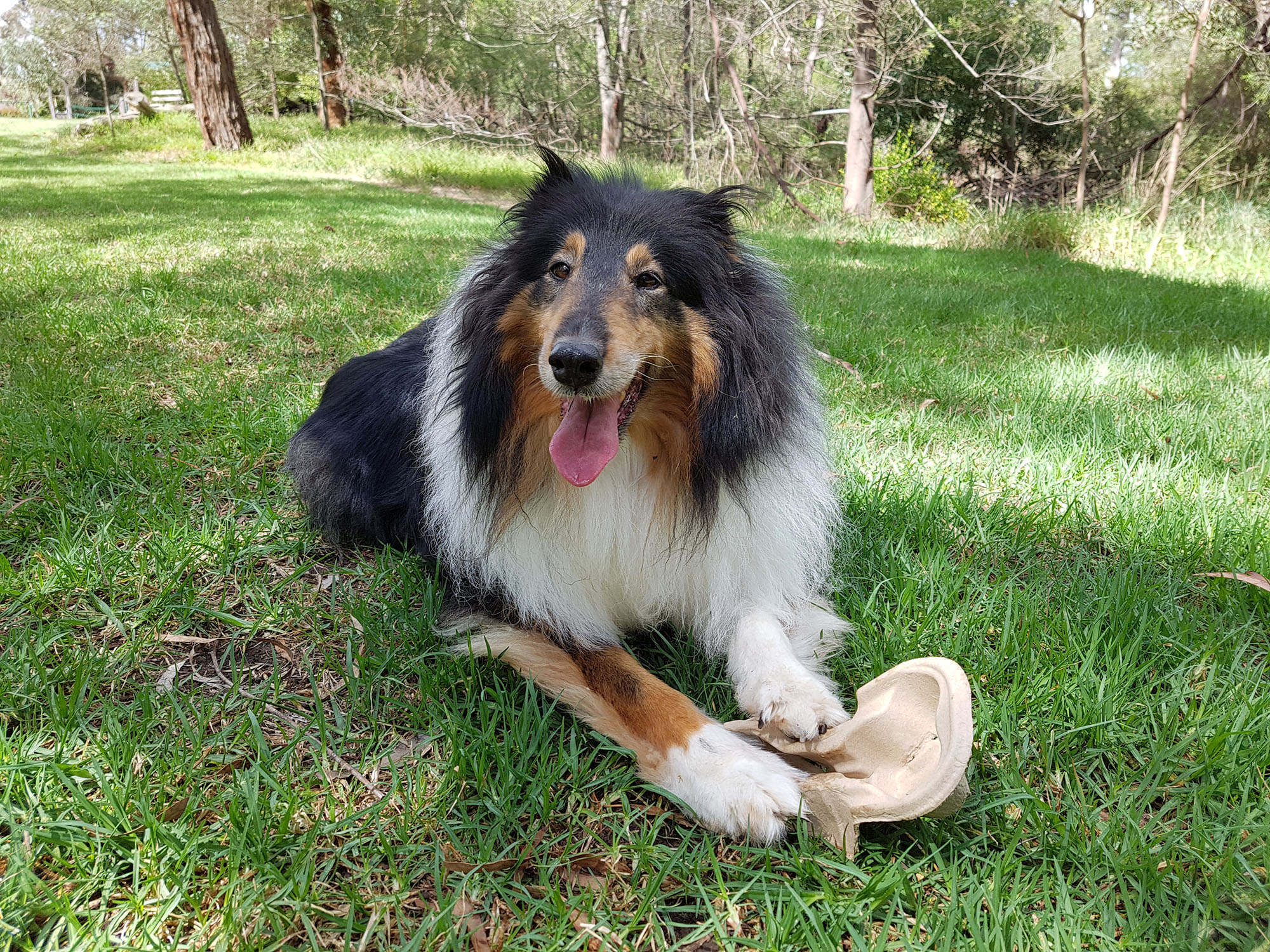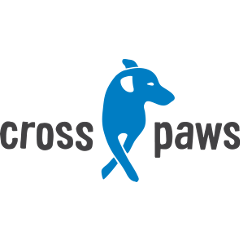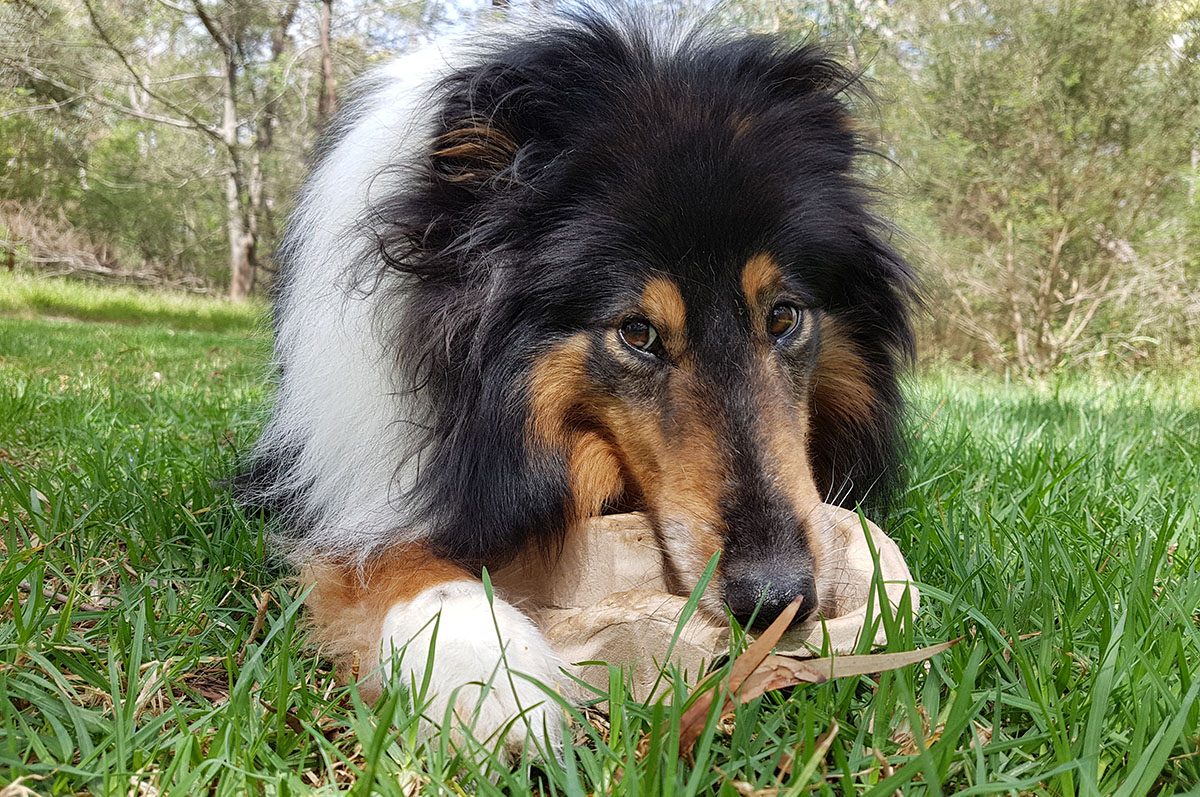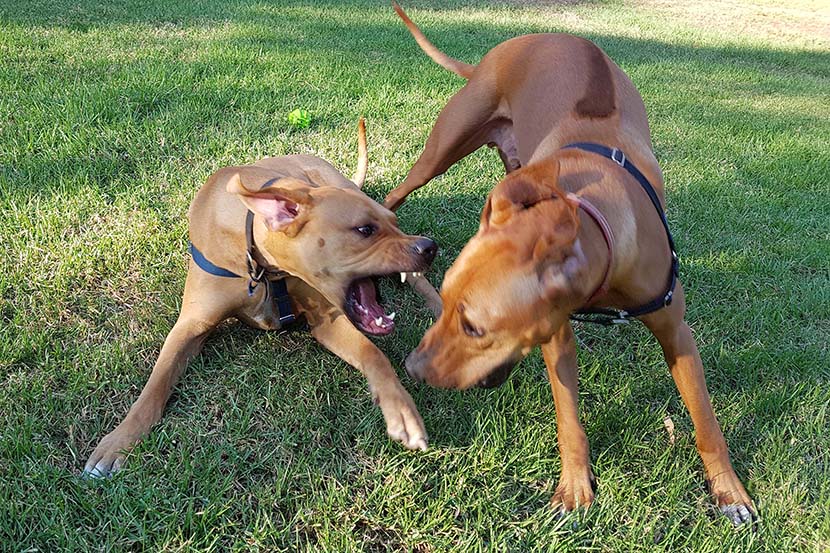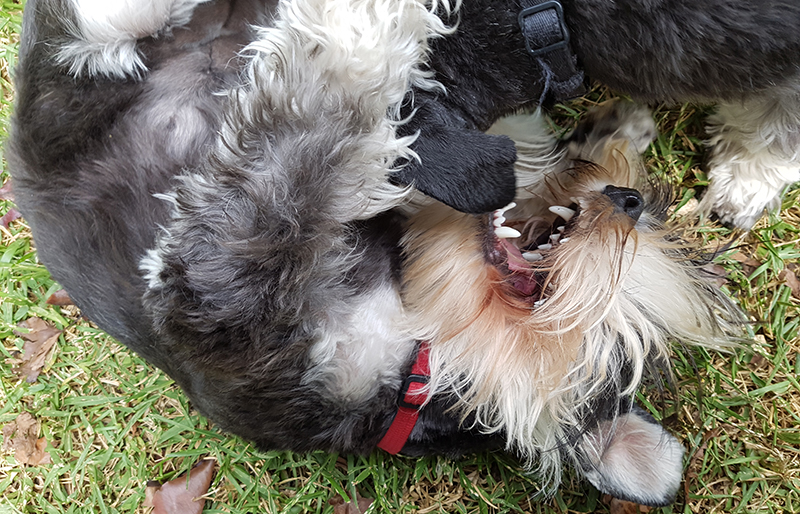Being sick is no fun. No matter, if our ailment is of a physical or mental nature, it robs us of having a good life and doing the things we love. Anxiety, phobias or depression can be as debilitating as broken bones or battling a disease. And it’s no different for our dogs.
But, just like us, dogs can benefit greatly from engaging in physical and mental activities, solving puzzles or playing games. It may start as nothing but a temporary relief or a distraction, but it may also grow into a newfound appetite for life. Often, the first step is the hardest, so here is some advice on how to get started with your dog.
Having to Worry About Their Environment Can Make Your Dog Sick and Unhappy
Does your dog shy away when someone tries to touch them, trembles at the vet or groomer or gets upset by noises? Does your dog seem withdrawn or inactive despite being neither physically incapacitated nor very old? Does your dog growl at people or other dogs, or worse?
Dogs who worry about their environment most or all of the time have a stressful life. They often do not have the confidence, drive or energy to engage in playful or investigative behaviours. Instead, they stay where they feel safe and avoid attracting attention. If they are pushed out of their safe environment, they may respond with fearful or aggressive behaviour.
The reasons for this can be multiple. A dog may have been born with a natural shyness or had adverse early life experiences. They may have suffered some form of trauma or been exposed to regular verbal or physical punishment. Or maybe they simply missed out on good socialisation during the critical first few weeks in life.
Although it may seem the easiest option to just leave the dog alone, it usually does nothing to improve their quality of life and their mental health may deteriorate further. Also, the old “leave the dog alone” advice for any dog that shows aggressive behaviour doesn’t really work anymore these days, at least in our modern urban environments. Dogs live in close contact with us and conflict is almost guaranteed since neither dogs nor people are always in a position to get out of each other’s way. So, we better make sure our dogs are happy where they live and look after their mental health as well as their physical health.
Getting Your Anxious Dog to Play Can Add Greatly to Their Quality of Life
Complete care for anxious, fearful and fear-aggressive dogs requires
- a health check by a vet or behaviour vet,
- a well-designed behaviour modification program (typically involving desensitisation & counterconditioning and positive reinforcement training)
- an environment where the dog feels safe and
- physical & mental enrichment.
A great option for enrichment for anxious dogs is capturing and shaping a behaviour. It is a non-invasive—and therefore non-threatening—way to get your dog to do things. The initial behaviour can be as simple as your dog looking at an object near them, let’s say a cardboard box you just put on the ground. If you want to capture this behaviour, immediately praise (or say a cheery “yes!” or use a clicker, if you prefer) and give your dog a tasty treat every time you put the box down and your dog looks at the box.
It will usually only take a few repetitions for the dog to connect the dots: I look at the box –> I get a tasty treat. Soon the dog may not just look at the box, but actually move towards it. After all, isn’t it interesting that looking at a box earns you a treat? There must be something about this particular box. So, let’s check it out!
Eventually, your dog may offer other behaviours such as pawing at the box or biting it, so you reinforce these behaviours and eventually stop reinforcing merely looking at the box. You have shaped your dog’s behaviour from noticing the box to engaging with it. From there you might decide to shape ripping the box apart, so you only reinforce biting and no longer pawing. Next you reinforce vigorous biting and no longer gentle nibbling.
Where you go with this is up to you and your dog. Maybe your dog discovers how much fun it is to rip cardboard boxes apart and doesn’t need food reinforcements anymore or they love finding some tasty morsels you have hidden inside the box. The important thing is that your dog is having fun. And, hopefully, you have fun watching your dog being happy.
Jezz the Anxious Collie Having Fun
The following video shows some scenes of shaping engagement with an object, in this case a carry tray for coffee cups. It started one day when a friend and I had take-away coffee at a park with Jezz, the anxious Collie. There was no particular agenda. Jezz simply had a sniff at the tray when I tossed it on the ground and it went from there. Now she runs at it, picks it up, tosses it into the air, sometimes rips it to pieces and seems to get a genuine kick out of doing so. That was all that mattered. Anxious Jezz having fun!
While this may not seem a remarkable behaviour for dogs without anxiety issues, for dogs like Jezz, who can jump at her own shadow, this is a huge step forward and almost wondrous to watch. Here is how we got there:
A Safe Environment
The first crucial ingredient is the environment: There is a clearing surrounded by natural bushland, set along a creek in suburban Melbourne, where Jezz loves to hang out. In fact, I believe she would happily adopt this place as her permanent home. We frequently see the iconic Kookaburra and other native birdlife and there is even a hive of Australian bees being busy in a tree hollow. It’s a little oasis where Jezz feels safe and comfortable.
Suitable Reinforcement
Next, the reinforcer: I needed food which Jezz loves and wants more of. I mostly used freshly cooked or dehydrated chicken breast and sometimes cheese. Don’t make assumptions about what type of food your dog will work for. Test it by offering a large range of goodies. Most dogs prefer moist treats with meat, fish or cheese to dry kibble.
Observational & Timing Skills
The moment I saw Jezz sniff at the cardboard tray one day, I praised her with a cheery “Yes!” and immediately reached into my pocket for a treat. Jezz knows what reaching into my pocket means: There is a high chance she gets a tasty treat. How does she know this? Because she has experienced it many times over: I reach it into my pocket and out comes a treat.
My timing was crucial here. If I had left even a few seconds pass before reinforcing Jezz with praise and food, she would not have made the connection between her investigation of the tray and the treat delivery.
Being able to watch Jezz approach the tray meant I had to be vigilant and ready to reinforce her with food. If I had missed one or more approaches, I could have missed my chance entirely since without the food reinforcement there would have been no reason for Jezz to continue approaching the tray.
Differential Reinforcement
To develop Jezz’s new found skill further I had to take it up a notch and be more discriminating about which behaviours I reinforced and which ones I ignored or reinforced to a lesser extent (lower value treats or praise only). Differential reinforcement simply means that we reinforce certain behaviours but not others. The “other” behaviours can be anything that the dog may also be interested in doing at the same time, but which doesn’t get us closer to our goal.
In Jezz’s case I simply wanted to encourage any engagement with the tray that looked like play. Grabbing it and running with it or tossing it into the air was great, but she also enjoyed pawing it and chewing pieces off it, so I reinforced that too. Eventually I stopped reinforcing her for merely approaching and sniffing the tray. As a result, she did that less and, more often than not, went straight for the more playful behaviours of grabbing, tossing, running with the tray and—once she got a little tired—dissecting it.
If my goal had been to teach Jezz to pick up the tray and bring it to me, I could have only reinforced her when she put her mouth on the tray but not when she was pawing it. Typically, after a dog has put their mouth or teeth on an object a few times, they start lifting it off the ground occasionally. Once the “new” behaviour, in this case “lift off” happens often enough, the simpler behaviours, in this case “mouthing” are no longer reinforced. Then we wait for the next behaviour to pop out, in this case “taking a few steps with the tray in her mouth” and once this occurs at a sufficient frequency, we no longer reinforce a simple “lift off”. And so on.
When to stop reinforcing simpler behaviours and only reinforce the next closer approaches to whatever end goal you have in mind is a judgement call and, if made too early, can lead to frustration and eventually quitting in the dog. On the other hand, reinforcing the same behaviour for too long, can mean progress is very slow and the dog may even quit because it gets boring!
Here is anxious Jezz with her new toy. Happiness can be found in the most simple things.
